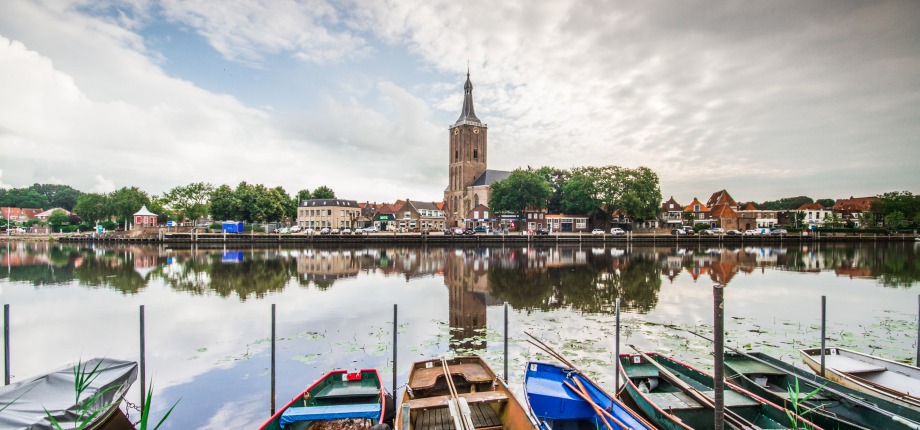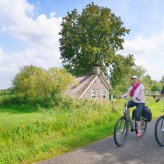If you look around you from the Steenwijk steeple, the variation is almost tangible. Look towards Southwest Drenthe and you can see the low moors turn into high, sandy soils. If you turn your head and look in the direction of the Noordoostpolder, you can see the transition from old to new land. You can discover all of this variation in landscape and cultural history within a circle of 40 kilometres.
Whether you go canoeing in Fryslân, wander the heathland in Drenthe, want to explore the Hanseatic cities of Zwolle, Kampen or Hasselt or want to stand four metres below sea level in the new lands of the Noordoostpolder… or if you want to know more about the reclamation of the lowlands, you are at the heart of all those discoveries in Weerribben-Wieden.
IJsseldelta and Hanseatic cities
The slogan of the IJsseldelta National Landscape is ‘miniature Netherlands’, and there is a good reason for that. The characteristic delta landscape, combined with a centuries-old trading history with impressive cog ships on the IJssel river. We remember a golden age of trade and wealth. While life in Weerribben-Wieden often consisted of hard work and hard times, the peat trade was indispensable to this area. It was the lifeblood of towns like Zwartsluis, Blokzijl and Meppel. The IJssel and trade are inextricably connected to Hanseatic cities like Kampen and Zwolle, medieval centres of trade in Europe. The old cog ships found in the Flevopolders and the IJssel are proof of the prosperity the Hanseatic League brought these various cities.
Southwest Drenthe
With three National Parks so close to each other, Weerribben-Wieden is a natural pearl in the Dutch landscape. The Dwingelderveld with its purple heathland, the Drents-Friese Wold with its woods and sandflats, and Weerribben-Wieden with its reed lands and water. Together, these parks tell the story of the origins of the Netherlands, on the border between land and water. From push moraines to marshes, from woods to reeds, from dry soils to fertile soils.
Rottige Meente and Friesland
From a landscape and ecological perspective, Weerribben-Wieden shows many similarities with the moors of Friesland, such as the Rottige Meente and the Alde Feanen. The landscape mosaic of elongated fields (peat dykes), water and reeds stretches across provincial boundaries and offers a wide diversity of flora and fauna. The landscape connections between Rottige Meente and Weerribben-Wieden are best symbolised by the otter, which was released in Weerribben-Wieden National Park in 2002 and can now also be found swimming in the Rottige Meente.
Noordoostpolder
Blokzijl and Vollenhove are in a transition zone between old and new land. If you stand on the dyke near Blokzijl and look out in a northeast direction, you will see elongated peat dykes, water and reeds. If you look to the west, you will see the new land. Large, square plots of grassland, ready for the latest in agrarian machinery. The characteristic windmills in the Weerribben have been succeeded by the modern windmills of the present in the Noordoostpolder.





